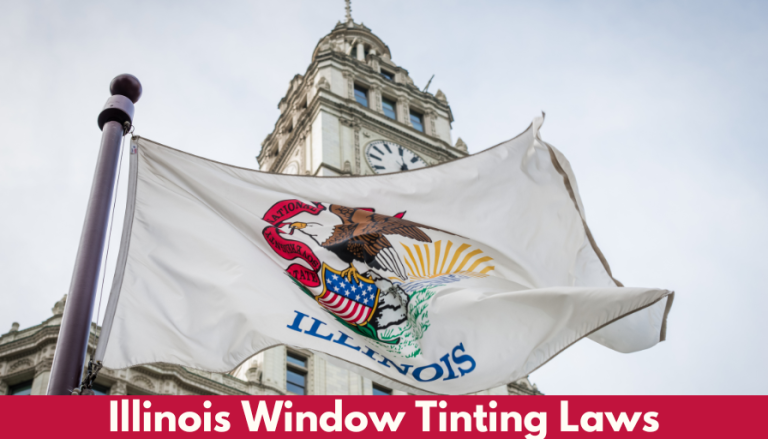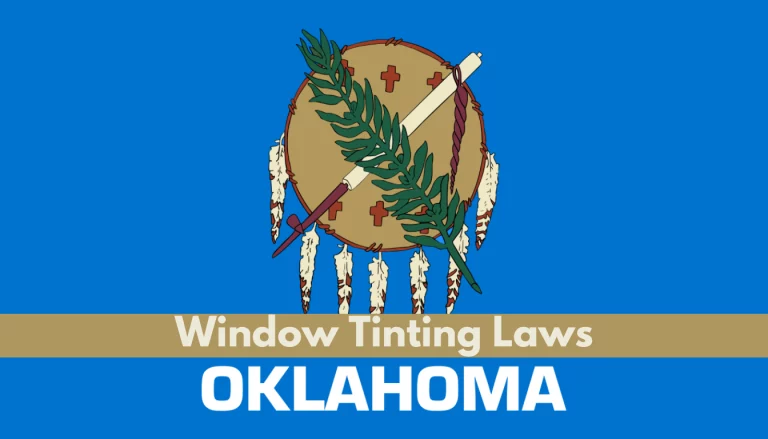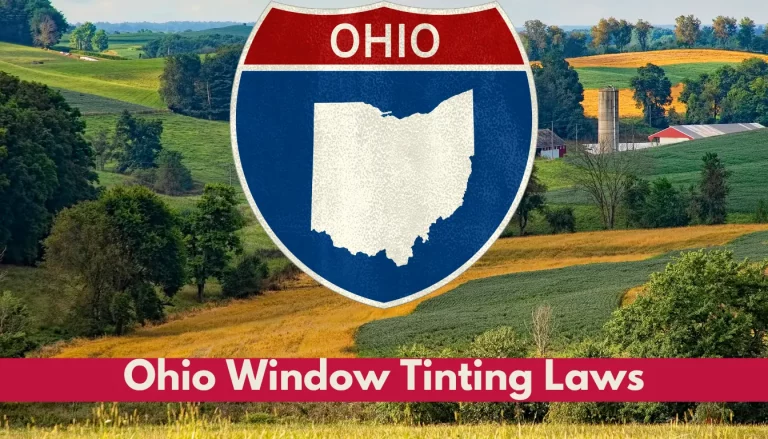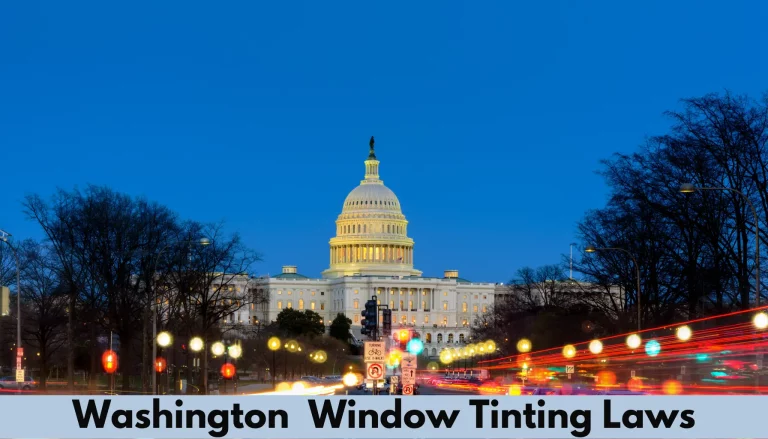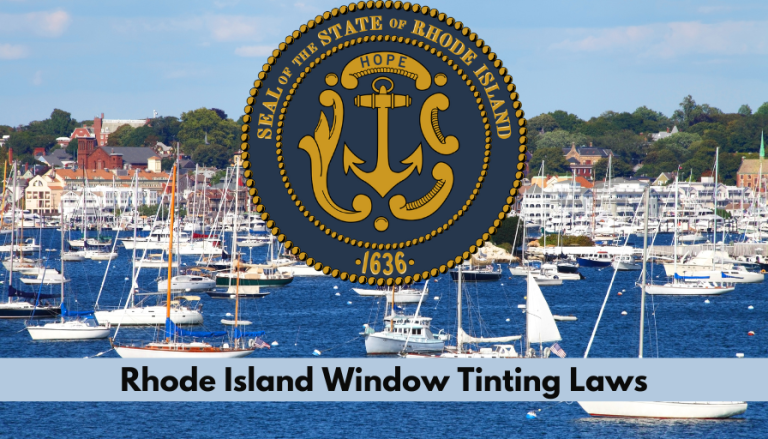Alabama Window Tinting Laws: VLT and Reflectivity Rules
Navigating Alabama’s window tinting laws can be a bit like finding your way through a maze. I’ve been there, and I know it’s crucial to get the facts straight to avoid any legal headaches down the road. That’s why I’m here to shed some light on the dos and don’ts of tinting your vehicle’s windows in the Heart of Dixie.
Whether you’re looking to add some style to your ride or seeking the comfort of UV protection, understanding the legal boundaries is key. Alabama has specific regulations regarding how dark and reflective your window tint can be, and trust me, you don’t want to overlook these details. Let’s dive into what you need to know to ensure your tinted windows are more than just a cool addition—they’re also compliant with state law.
Understanding Alabama’s Window Tinting Laws
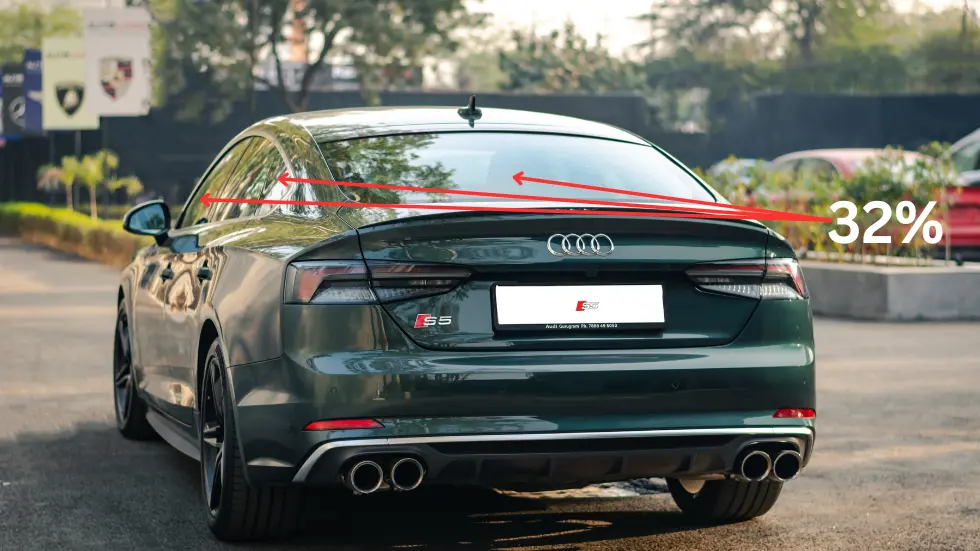
When it comes to customizing cars, I’m always meticulous about adhering to local regulations. Alabama’s window tinting laws are no exception. It’s crucial to familiarize yourself with state-specific rules to avoid penalties. The Alabama Window Tint Law was enacted in 1996 and has guidelines I make sure to follow for the VLT (Visible Light Transmission) percentage.
Here’s what you need to know:
- For sedans, front side windows must allow more than 32% of light in.
- The back side windows and rear windows can have a tint that allows at least 32% of light through.
- SUVs and vans have a bit more leeway with the back side and rear windows.
Interestingly, Alabama has regulations regarding the tint’s reflectiveness. This is pivotal to reducing glare and ensure visibility for all drivers on the road.
- Tint reflectiveness on front and back side windows should not be more than 20%.
Alabama law also requires a compliance sticker identifying legal tinting, which must be inside the door jamb of the driver’s side door.
Medical Exceptions in Alabama Tinting Laws
Alabama understands that some medical conditions warrant exemptions from standard tinting regulations. For those who need darker tints for medical reasons, proper documentation must be presented to authorities upon request, demonstrating clearly why an exemption is justified.
To circumvent any legal trouble, I always keep a copy of this documentation in my vehicle at all times.
Tint Colors and Additional Restrictions
While most states allow certain tint colors, Alabama puts forth specific bans:
- Red, amber, and yellow tints are strictly prohibited.
Moreover, dual side mirrors are required if the back window is tinted. In my experience, it’s always best to double-check with a local professional who understands the intricacies of these regulations. Plus, staying updated on any changes to the law ensures that your window tint will always be up to par.
The Importance of Compliance

Adhering to Alabama’s window tinting laws is paramount to my driving experience. Compliance isn’t just about avoiding fines or legal repercussions; it’s also about ensuring the safety of myself and other drivers on the road.
Windows tinted beyond the legal VLT percentage can significantly impair a driver’s ability to see, especially during nighttime or in adverse weather conditions. This is why adherence to these laws is an essential part of being a responsible vehicle owner.
When my car is in line with the legal standards, it passes inspections without a hitch, maintaining its resale value and avoiding potential roadblocks during resale or transfer of ownership. Beyond this, insurance companies often frown upon modifications, including illegal window tints, which can lead to policy complications or even cancellation.
Getting the window tint done right the first time saves me time, money, and potential legal troubles. It’s wise to enlist professional services that understand and adhere to the specifics of Alabama regulations.
This includes the prohibition on certain tint colors and the necessity of installing dual side mirrors if the back window is treated with a darker tint. Ensuring the installation includes the state-mandated compliance sticker is paramount.
Medical exceptions do exist. However, the documentation verifying a medical exemption needs to be up-to-date and readily available. Not having the proper paperwork can result in the same penalties as having no exemption at all. It’s important for drivers with medical exemptions to understand that they are not above the law but are granted leeway within specific, regulated parameters.
It’s my responsibility as a driver to be proactive about understanding and complying with these regulations. Periodically checking for any updates to the law is part of ongoing vehicle maintenance and ensures that when driving through Alabama, I can focus on the journey and not worry about the legality of my window tint.
Darkness Limitations
When talking about window tinting, the term “darkness” is usually measured by the percentage of Visible Light Transmission, or VLT, that a tint allows through. In Alabama, the law specifies exact VLT percentages for different types of vehicles. These limitations ensure that there’s a balance between privacy and visibility.
For passenger vehicles:
- The front side windows must allow more than 32% of the light to pass through.
- The rear side windows can have a VLT of at least 32%.
- The rear window must also maintain a minimum VLT of 32%.
For multi-purpose vehicles, such as SUVs and vans:
- The front side windows must comply with the same 32% VLT requirement.
- The rear side windows and rear window can be darker, but there’s an important caveat – If the rear window is tinted below the prescribed limit, the vehicle must have outside rearview mirrors on both sides.
My advice is to keep a copy of the tinting specifications with you after the installation. This way, there’s concrete proof of compliance in case of a vehicle inspection.
It’s also worth noting that front windshield tinting is a bit different. A non-reflective tint strip on the top 6 inches of the windshield is permissible. For the rest of it, applying any aftermarket tint is illegal, as it can severely impede the driver’s view.
Here’s a specific breakdown of the legal VLT percentages for vehicle windows in Alabama:
| Type of Window | Legal VLT Percentage |
|---|---|
| Passenger Vehicle Front | Over 32% |
| Passenger Vehicle Side | At least 32% |
| Passenger Vehicle Rear | At least 32% |
| MPV Front | Over 32% |
| MPV Side/Rear | No restrictions* |
* Rear window restrictions apply if side-view mirrors are not present.
Remember, tinting your windows darker than the state’s limitations can lead to a citation. It’s crucial to stick to Alabama’s guidelines to avoid fines and ensure your safety on the road.
Reflectivity Restrictions
When it comes to window tint reflectivity in Alabama, there are specific regulations that are just as important as VLT percentages. Reflective windows can help deflect incoming sun rays, potentially keeping your vehicle cooler. However, too much reflectivity can cause glare and impair visibility for both the driver and other road users.
Alabama law stipulates that the front side windows of a vehicle may have a certain level of reflectivity. This is measured by the Reflective Light Transmission (RLT) percentage. The maximum level of reflectivity allowed for front side windows is similar to that of a standard window. Here’s the breakdown of Alabama’s specifications for window tint reflectivity:
- Front Side Windows: Must not be more than 20% reflective
- Rear Side Windows and Back Window: No specified reflectivity restrictions
Understanding these restrictions is crucial to maintain road safety and avoid penalties. It’s worth noting that these standards help minimize the risks associated with excessive tint reflectivity; for instance, disrupting the vision of other drivers by reflecting the sunlight directly into their eyes or obstructing a driver’s own visibility during nighttime by reflecting the interior lights of the vehicle.
Effective window tints manage both VLT and RLT, offering optimal vision, reduced glare, and improved vehicle aesthetics without compromising on legal standards. Since there is no specific mention of the allowed reflectivity for rear side and back windows, it’s generally recommended to adhere to the same standards applied for front side windows to err on the side of caution. Always have your window tints installed by a professional who’s familiar with Alabama’s window tinting laws to ensure compliance.
Any updates or changes to these laws can be obtained through the Department of Public Safety or local law enforcement agencies. As I navigate the roads of Alabama, I make it a point to stay informed about such regulations and also ensure that my vehicle’s window tint adheres to the current legal requirements.
Exceptions and Exemptions
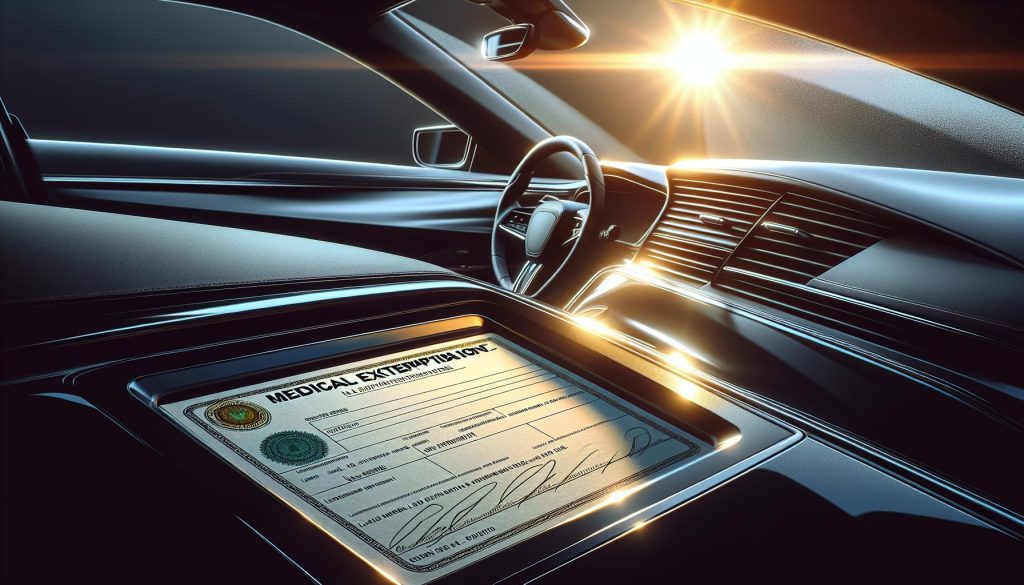
When I’m exploring Alabama’s window tinting laws, it’s crucial to acknowledge that there are certain situations that warrant exceptions and exemptions from the standard regulations. Specifically, medical exemptions allow individuals with particular medical conditions to have window tints that are darker than the state mandates.
If you’re wondering who qualifies for these medical exemptions, the state laws are clear that individuals with conditions that necessitate protection from direct sunlight or bright artificial light can apply. Obtaining a medical exemption requires a physician’s statement or certificate that justifies the need for a specific VLT percentage. Remember that this certificate must always be within the vehicle as proof in case of inquiries by law enforcement.
In Alabama, another aspect to consider is that certain vehicle types are exempt from standard window tint laws. Vehicles such as limousines and passenger buses often have tinting that exceeds general legal limits due to the nature of their use for privacy and passenger comfort.
Here’s what you need to keep in mind about medical and vehicle exemptions:
- To apply for a medical exemption, a physician’s detailed explanation and certification are mandatory.
- The exemption certificate should include the minimum VLT necessary for protecting the individual’s health.
- The certificate must be renewed annually to ensure it reflects current health conditions.
- Vehicles with medical exemptions need to have the certificate clearly displayed or readily accessible.
- Specific vehicle types like limousines may have tints below the standard VLT levels and often comply with a separate set of regulations tailored to their classification.
It’s advisable to contact the Alabama Department of Public Safety for the most recent guidelines and procedures related to window tint exemptions. This is the best way to ensure that any deviations from the norm are legitimate and certified. Staying informed about these exceptions helps me maintain both legal compliance and an awareness of the provisions available for health and privacy considerations.
Conclusion
Staying informed about Alabama’s window tinting laws ensures that I’m both compliant and safe on the road. Remember, it’s not just about the aesthetic appeal of darker windows but also about adhering to legal standards to avoid fines. If you have a medical condition that necessitates darker tints, don’t forget the exemption process is there to support you. Always keep up to date with the Alabama Department of Public Safety for the latest in window tint regulations. Drive safe and stay on the right side of the law!
Frequently Asked Questions
What is the maximum window tint darkness allowed in Alabama?
In Alabama, the maximum darkness allowed for window tints varies by vehicle type. For passenger vehicles, the VLT must be at least 32% on all windows. For multi-purpose vehicles, the front side windows must have a VLT of at least 32%, while the back side and rear windows can be any darkness.
Are there any mirror requirements when tinting rear windows in Alabama?
Yes, Alabama law stipulates that if the rear window is tinted below the state VLT limit, the vehicle must be equipped with outside rearview mirrors on both sides.
What is the allowed level of window tint reflectivity in Alabama?
Alabama allows a maximum window tint reflectivity of 20% for front side windows. Reflectivity for other windows is not specified in Alabama regulations.
Are there any exceptions to the window tint regulations in Alabama?
Yes, there are exceptions for individuals with certain medical conditions that require protection from the sun. Also, specific vehicle types such as limousines have exemptions regarding window tint darkness.
How can someone apply for a medical exemption for window tint in Alabama?
To apply for a medical exemption for window tinting in Alabama, an individual must submit proper documentation from a licensed physician to the Alabama Department of Public Safety. The department will then issue a medical exemption certificate if the application is approved.
Where can I find the most recent guidelines on window tint exemptions in Alabama?
The most recent guidelines and procedures on window tint exemptions can be obtained by contacting the Alabama Department of Public Safety. They have the latest information and can provide guidance on compliance with window tint regulations.


